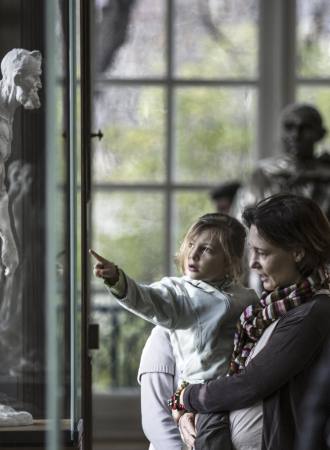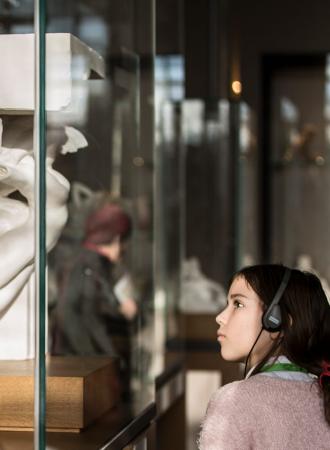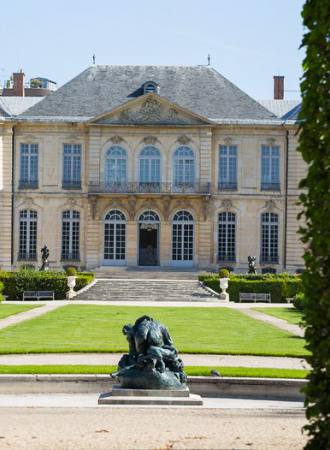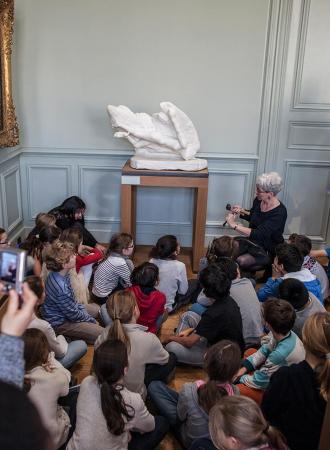Search the site
The Gates of Hell
Auguste Rodin (1840-1917)
In 1880, Rodin received a state commission for a grand entrance to a planned museum of decorative arts, in the form of bronze doors decorated in low relief with illustrations of Dante’s Divine Comedy. Rodin drew his inspiration from the first part of the book, entitled Inferno. He worked on this project in the studio he had recently been allocated in the Dépôt des Marbres at 182, rue de l’Université in Paris. After studying the coffered design of Lorenzo Ghiberti’s Gates of Paradise for the Florence Baptistery, Rodin finally opted for a structure resembling a Gothic portal.
He modeled over 200 figures, including some of his most famous―Paolo and Francesca (The Kiss), The Thinker and Ugolino―which he reused throughout his career, isolating, enlarging or assembling them. Rodin removed the projecting figures from the first version of the Gates exhibited at the Pavillon de l’Alma in 1900, thereby toning down the contrasts. This plaster work was transported to Meudon in February 1901, returned to the Dépôt des Marbres in 1904, and finally taken back to Meudon around 1911-1912 to be placed in the reconstructed Pavillon de l’Alma. In about 1931, it was moved to the museum’s new gallery, where it is visible today. Under the supervision of curator Léonce Bénédite, photographs and previous molds guided the 1917 reconstruction of The Gates of Hell, which was not cast in bronze until after Rodin’s death.
Locate the artwork in the museum
Musée Rodin - Meudon, plaster gallery
We cannot guarantee the presence of all our artworks; some may be out on loan.
SEE ALSO
Completion date :
1900
Dimensions :
H. 620 cm; W. 388 cm; D. 100 cm
Materials :
Plaster
Inventory number :
S.02000
Credits :
© Photographic Agency of musée Rodin - Jérome Manoukian
Additional information
Iconography
- The Gates of Hell (zip, 405.2 ko)







